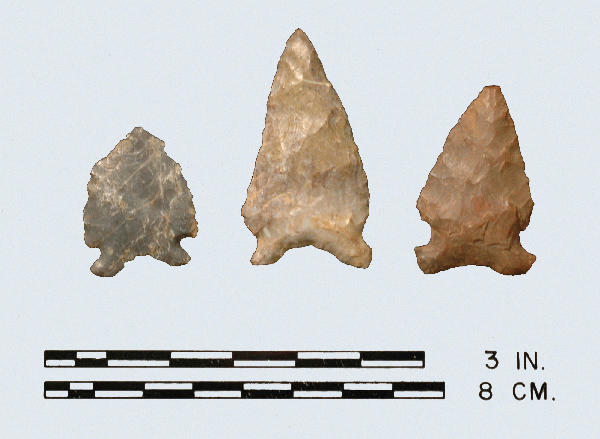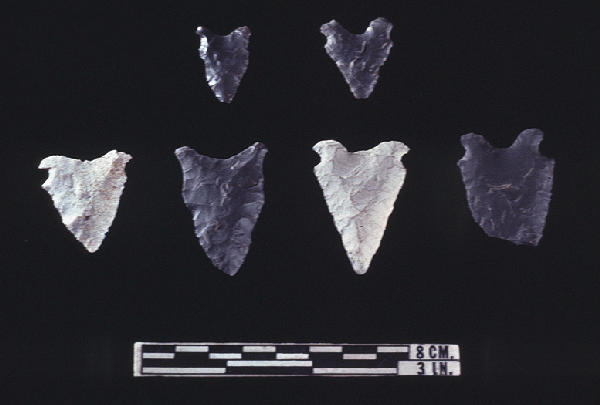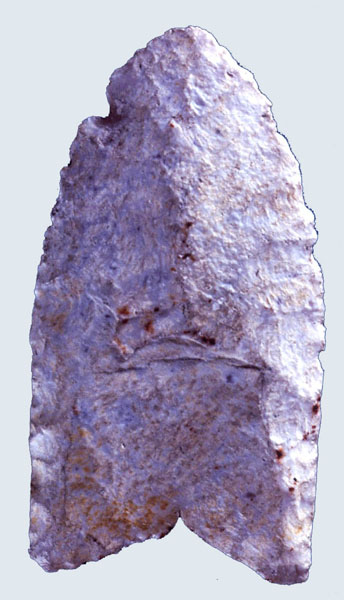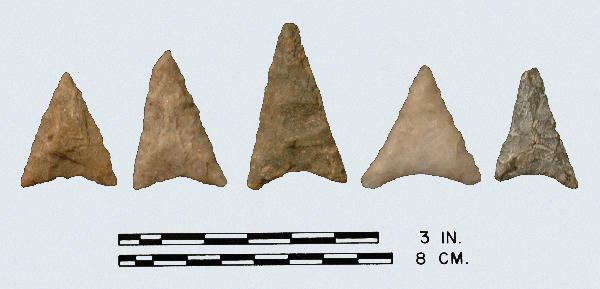
Hardaway Side Notched: chert, chert, jasper.

Hardaway Side Notched: Top Row: all chert; Bottom Row: rhyolite, chert, tuff, chert.
Type Lanceolate Paleo-Indian
Defining Attributes
The Hardaway Side Notched point has a small, broad, thin blade with narrow side-notches and a re-curved, concave base.
Chronology
The Hardaway Side Notched point dates to the Paleo-Indian period, 8200 to 8000 BCE. The Hardaway Blade, the Hardaway-Dalton, and the Hardaway Side Notched appear to be related types. At the Hardaway Site in North Carolina all three types were recovered from the same occupation zone (Coe 1964). Coe assumes that these three types occurred as variations during a relative long period of time prior to the beginning of the Early Archaic period. The Hardaway Side Notched is a more specialized form which developed last. McAvoy (1997) notes that although no radiocarbon dates have been obtained for these points in Virginia or North Carolina, a suggested temporal placement is 8200 to 8000 BCE based on the excavated position on the Slade Site in Virginia.
Description
- Blade: The blade is broad and very thin, typically the shape of an equilateral triangle below the notch. The sides are usually straight, but occasionally rounded.
- Base: Concave, re-curved, and ground, the base is often so deeply concave that it is notch-like. Side notches are narrow, deep, and u-shaped, averaging 4 mm deep and 5 mm wide. Most bases were thinned by broad, shallow flakes that frequently extend a third of the distance down their face.
- Size: Length ranges from 28 to 50 mm with an average of 35 mm. Width ranges from 23 to 35 mm with an average of 25 mm. Thickness ranges 3 to 6 mm with an average of 4 mm.
- Technique of manufacture: Similar to the percussion flaking used for the Hardaway Blade; however with Hardaway Side Notched points all edges were carefully re-worked to produce a light delicate point (in contrast to the roughness of the Hardaway Blade). The primary flakes were usually broad and shallow, while the secondary flakes were long and narrow.
Discussion
The Hardaway Blade, the Hardaway-Dalton, and the Hardaway Side Notched appear to be related types that follow one another in time. The Hardaway Side Notched is a more specialized form which developed last.
Defined in Literature
Coe (1964) originally defined the type based on points recovered from the Hardaway Site in the Piedmont of North Carolina.
References




